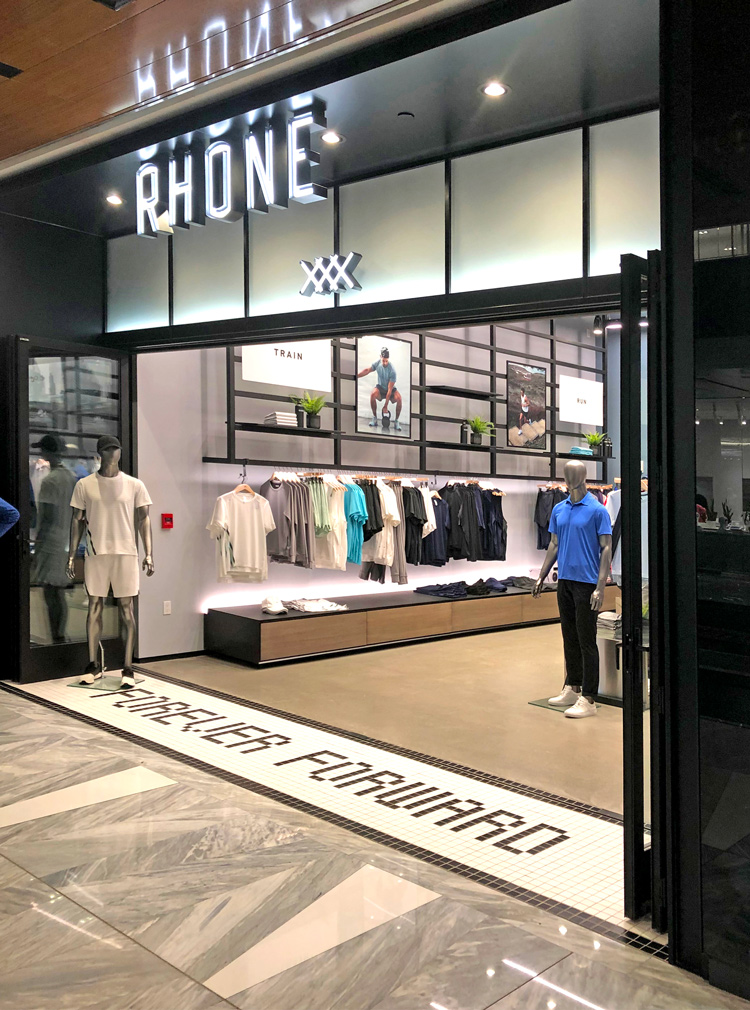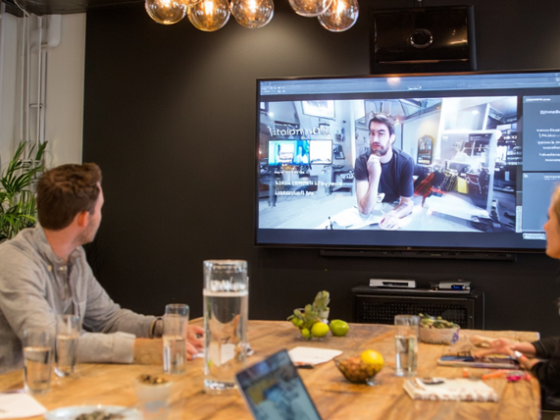In just eight short years, Rhone has carved out a space for itself in men’s apparel with a focus on luxury materials and versatile products. We sat down with Co-Founder and Creative Director, Ben Checketts to talk about the brand’s expanding vision, intentional restraint, and knowledge gained along their journey.
Q: Ben, thank you for spending some time with us. First of all, “Creative Director” can encompass a number of things, so start by telling us about your focus at Rhone.
Ben: I am split between two teams, product and brand marketing, and we recently adjusted to bring product under one creative direction.
On the product side, I try and stay current on trends. I look at our positioning in the product category and what stories we can explore. In brand marketing, I explore larger seasonal themes and how they translate into individual campaigns and product marketing. On the brand marketing side, we are finding ways to show that we are a little bit more sophisticated and a little bit different than anything they’ve seen.

I obsess about how we talk to our customers, whether that’s in product or whether that’s directly through messaging and brand marketing. My obsession is understanding our customer better—the psychology behind why he makes certain decisions on his daily journey and how we can serve his needs better. The better I do that, the better the entire business is— both on the product and on the marketing side.
Q: Give us a little background on why you and your brother, Nate started Rhone and what you hoped to accomplish in the retail space.
Ben: When we started Rhone, we were one of the only brands focused on men and athleisure, although we prefer the term “work-leisure,” and we have a robust active performance side as well. We knew we had to be a brand that spoke to men of a certain age and demographic because at some point you graduate from wearing Nike and Under Armor. You want something a little sleeker and more sophisticated. ASG really did a fantastic job of helping us bring those concepts into our stores in a way that wasn’t heavy-handed. You know when you walk into stores and there are words plastered on the wall? We didn’t want that. We wanted something more elevated. Something that matched our brand.
Q: When you started thinking about Rhone’s ideal store, what was most important?
Ben: I wanted to create a space where men of all sizes, shapes, backgrounds, etc. would feel comfortable shopping. Our staff is committed to creating a place that’s safe for all men. Shopping is not the easiest thing for men. So how do we make it as comfortable and as inclusive as possible?
If we create a product that people love and create spaces that are safe for them, those are really our main objectives in terms of an in-person brand experience.
Q: Is there any correlation between bringing product under a single creative view and Rhone’s transition to physical retail?
Ben: Definitely. As we grew our retail presence, it became increasingly clear to us that our product was a little bit all over the place. We were hard to understand as a brand, mostly because of the variety of our products. A lot of brands get into this trap. We started out with four styles, and we had tremendous success, and we thought, you know what’s better than four styles, like 300 styles.
But the art of essentialism is doing less but better—and that was kind of the transition. So as we went into retail, we knew we needed to simplify in order to better serve our customers. Shoppers are just now starting to see some of the changes that we made to condense product as well as the execution of certain creative ideas and themes that make us easier to digest and easier to understand as a brand.

Q: How has your approach changed since opening the first store?
Ben: We incorporated storytelling (where appropriate) and let the product be the star. We are also educating on the products. Other brands call in-store associates “Educators.” We wanted an element of that, but honestly, for us, especially as men, we almost want to discover that for ourselves.
Our main objective is to just get guys to try on. There is this crazy stat we discovered that 83% of people who try on our clothing, buy it. Usually, in retail, it’s much lower than that. Our objective is to create curiosity and educate so that all they really want to do is just try it.
Q: Digitally native brands often feel like they have to bring technology into the stores. How does Rhone think about digital as part of the in-store experience?
Ben: We believe our product is the best statement of who we are as a brand and what we believe in. Even something such as a simple TV screen that shows videos of your campaign can distract from the product.
We want people to get off their phones and experience the story. We had people come in and tell us, you need a statement wall so people can post on Instagram. What 37-year-old man, who’s in the exact middle of our target demo, do you know that’s looking for a statement wall to take a picture with? I know of none.
But we do need new technology to make it convenient for our guy, to make it so that if he orders online, he can pick it up easily. If he has a discount that can apply online, it can carry through to the point of sale. But we don’t want anything that’s going to detract from their experience and that first interaction with the product or trying it on. If we can get him to that point in the customer journey, we know that more than likely, he is going to convert.
Q: Rhone has worked with ASG now for over a year now. I would be foolish if I didn’t ask how the partnership has been for you and your team.
Ben: In a word, it’s been fantastic. It’s been transformative for our business. We had some initial calls and the ASG team fell in love with the way we talked about and positioned the brand and our values but they said, “look, we love this—but we don’t see this translating in any of your stores.”
ASG helped us see that not only is the in-person experience a statement about your brand in new and different markets, but it’s also an opportunity to inform about why we’re different from other options. They taught us that the physical store is really about the personal connection and the opportunity to speak about your brand.
Path to In-Person: A DTC Guide for Physical Retail
Q: So, what’s next for Rhone?
Ben: We want to have a real community space. This is one of the areas in which I believe Lululemon got it right. They deserve all the credit for being an innovator and using their spaces for their community.
We have had groups of men come in for what we call Mind and Muscle. There’s a little workout or a breathwork class for 20 to 30 minutes. Then it’s 20 minutes of, essentially, group therapy. The format is men talking and responding to prompts and sharing their feelings, and it’s remarkable to watch. Especially within the world of physical fitness influencers, you see these guys who look like their body is Photoshopped—they don’t look real. And suddenly their walls come tumbling down. They tell you about the issues they’ve had with their father, issues they had growing up, the fears, and the anxiety they have as fathers themselves. We want to create these safe spaces, where men can come in and shop, but also where we could hold these community events.
We’re also looking at active. During the pandemic, people really fell in love with the idea of getting good at something specific. They started running marathons, started cycling, weightlifting, or powerlifting, trail running as opposed to distance running. We are creating products that are a little bit more specific on the fitness performance side—an active refresh that will sit perfectly alongside our work leisure apparel.
And then, it’s just all about expansion—finding the cities and the areas where we fit in best.




